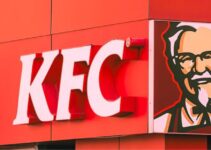PepsiCo is an American snack, food, and soft drink manufacturing multinational company. Caleb Bradham founded the soft drink company PepsiCo in 1898 and invested in drink in 1893. Today, we’ll discuss the Ansoff matrix of Pepsi; and its four growth matrix strategy analysis quadrants; market penetration, market development, product development, and diversification of the Ansoff matrix business example.
Elements of Market Penetration Strategy of Pepsi
- Famous for launchin popular advertisement campaigns and commericals
- Creating fun challenge campaigns to ignite user generated content
- Multipel media channels traditional and digital to approach customers
- Earning celebrity endorsement and hiring them as brand ambassadors
- Associating with world’s leading popular cultural events
- Taking sustainable to reduce the negative environmental impact
Top Selling Markets and Geographical Regions of Pepsi
- Tobago and Trindad – 60%
- Nepal – 70%
- North India – 38%
- Pakistan – 60%
- USA – 24.3%
- Asia, Middle East, and Africa
- Europe and Sub-Sahara Africa
- North and Latin America Beverages
- Quaker Foods North America
- Frito Lay North America
Latest and Best Selling Collection of Pepsi
- Cheetos
- Lay’s
- Doritos
- Tropicana
- Sierra Mist
- Lipton
- Aquafina
- Mountain Dew
- Quaker
- Gatorade
- 7up
- Pepsi
The Ansoff matrix of Pepsi would focus on the four growth matrix strategy analysis quadrants; market penetration, product development, market development, and diversification. Here’s the PepsiCo Ansoff matrix company example as follows;
Ansoff Matrix of Pepsi
Let’s discuss the four growth matrix strategy analysis quadrants in the Ansoff matrix of Pepsi as an Ansoff matrix company example; they’re as follows;
Market Penetration Strategy of PepsiCo
The market penetration quadrant in the PepsiCo Ansoff matrix company example as growth matrix strategy has the lowest risk. It is because here the soft drink and food manufacturing brand sells its current products and services in the existing customer market. However, the soft drink market is growing, and the market penetration growth strategy is possible.
I-Lower Price
PepsiCo has been in price wars with many soft drink brands and companies like Coca-Cola. It is a highly risky strategic approach because it would negatively impact the growth and profitability of the company. The lower price and discounting strategy helps the company to further penetrate the existing market with its current products. Resultantly, it amplifies PepsiCo’s sales, revenue, and market share.
II-Different Sizes & Package
In order to target various segments of the existing customer market, PepsiCo offers its products like food snacks and soft drinks in different sizes and packaging. It provides customers an opportunity to choose the size and packaging relevant to their budget, affordability, and need.
III-Aggressive Marketing
PepsiCo runs aggressive marketing and advertisement campaigns to promote its current products and services to existing customers. The soft drink brand employs various media channels, digital media, and social media platforms.
IV-Celebrity Endorsement
Along with marketing and advertisement campaigns; PepsiCo hires the world’s top celebrities, sports celebrities, and public figures as its brand ambassadors. They have got huge fan following; their brand endorsement amplifies the company’s brand exposure and sales.
Market Development Strategy of PepsiCo
The market development quadrant in the PepsiCo Ansoff matrix company example as the growth matrix strategy has a bit higher risk than the market penetration strategy. It is because here you expand your soft drink, food, and snacks market and offer your current product portfolio in the new market. However, you don’t know the culture and response of the new market; that’s what makes it riskier.
I-Market Expanding
PepsiCo is already operating its business in various countries across the globe like Asia, Europe, Africa, the Middle East, and America. The focus of the soft drink brand is to expand its market and offer its products to new customer market segments and new geographical regions.
II-Supply Chain & Distribution Channel
PepsiCo has established a very powerful supply chain and distribution network and it plays a key role in distributing its products in new markets across the world. The soft drink brand keeps on expanding its distribution channels and network in new regions and countries, and it makes sure to deliver the company’s products in new markets.
Product Development Strategy of PepsiCo
The product development quadrant in the PepsiCo Ansoff matrix company example as the growth matrix strategy has a higher risk than the market penetration strategy. It is because here you launch a new product service in the food, snacks, and soft drink line in the existing customer market. You would have to run new marketing and promotional campaigns for the new product and it makes it riskier.
I-Product Variants
PepsiCo offers a wide range of product variants in the soft drink category like low calories, zero sugar, dietary, and lower saturated fats. Along with soft drinks, PepsiCo also offers fresh juices to customers of different fruits and flavors. Some of the main product variants of PepsiCo are as follows;
- Nitro Pepsi
- Max Pepsi
- Zero Sugar Pepsi
- Vanilla Pepsi
- Pepsi-Cola Made with Real Sugar
- Caffeine Free Pepsi
- Crystal Pepsi
- Wild Cherry Pepsi
- Pepsi Lime
- Twist Pepsi
- Diet Pepsi
II-Research & Development
PepsiCo invests a significant amount of capital resources in research and development to invent new tastes and flavors to gain a competitive edge in the market. The objective of the soft drink brand PepsiCo is to attract the attention of customers with new and innovative drinks. However, Bottled Water Aquafina is a great example of the company’s product development and creative approach.
III-Partnerships & Alliances
PepsiCo has established partnerships and alliances with Starbucks, Unilever, and other brands in the development of tea, coffee, drinks, and fresh juices. The collaboration results in the form of creative thinking and product development.
Diversification Strategy of Pepsi
The diversification quadrant in the PepsiCo Ansoff matrix company example as growth matrix strategy is the most risky strategy than all three previous growth strategies. It is because here you launch a new product or service in the new customer market. You won’t know how your new market will react to the new soft drink beverage.
I-Horizontal Diversification
PepsiCo has been developing new products and expanding its customers market ever since its foundation. It has allowed the company to become the world’s leading brand through its diversification strategy. The company diversified into the following categories;
- Doritos
- Walker
- Lays Snacks
- Fiber-Based food products
- Whole Grain
Conclusion: PepsiCo Ansoff Matrix Company Example |Growth Matrix Strategy Analysis
After an in-depth study of the Ansoff matrix of Pepsi; we have realized that PepsiCo is the world’s leading soft drink and snacks manufacturing company. If you are learning about the PepsiCo Ansoff matrix business example; then you should keep in mind the abovementioned growth matrix strategy analysis quadrants; market penetration, market development, product development, and diversification growth strategy.

Ahsan is an accomplished researcher and has a deep insight in worldly life affairs. He goes Live 3 days a week on various social media platforms. Other than research writing, he’s a very interesting person.


